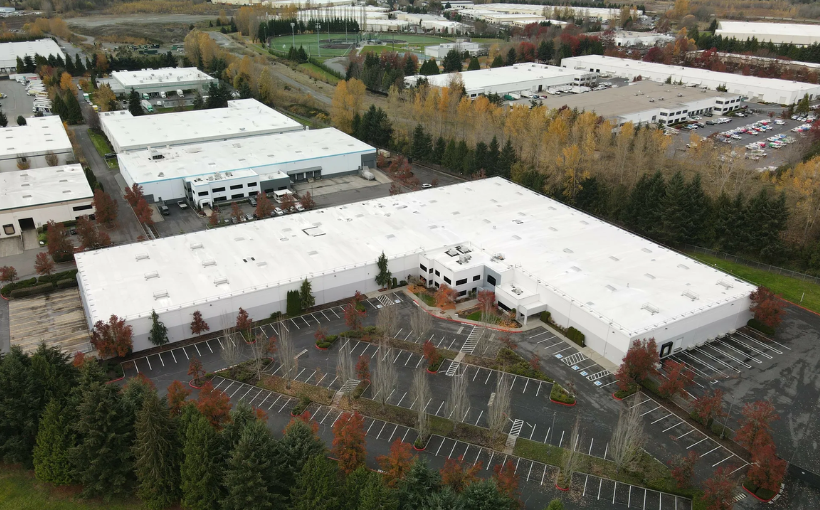**Assessing How the First 100 Days of 2025 Will Shape the Road Ahead for Commercial Real Estate**
*By Eric Enloe, Partner Valuation Advisors*
—
**A New Administration and a Shifting Market**
The beginning of 2025 has brought a notable shake-up in the commercial real estate (CRE) industry. With a new presidential administration in place, the sector has seen a flurry of executive orders and policy developments. While these changes have injected a degree of uncertainty, they’ve also generated renewed optimism. Investor sentiment is trending upward, capital markets are gradually stabilizing, and short-term interest rates have declined. However, the outlook remains mixed, with long-term rates remaining elevated and global geopolitical tensions continuing to weigh on overall economic confidence.
—
**Capital Markets and Investor Sentiment**
The 10-year Treasury yield has been a key indicator this year—starting between 4.5% and 4.6%, dipping to nearly 4% in April, and rising again to almost 4.5%. Although recession concerns persist, major institutional investors like Blackstone and KKR are taking a bullish position. Their moves to refinance large portfolios and rely on the commercial mortgage-backed securities (CMBS) market signal strong belief in an impending market rebound.
—
**Policy Impacts and Lending Outlook**
Early policy actions by the new administration have generally been positive for CRE. While trade tariffs remain uncertain, they could potentially kickstart more domestic industrial development. The cost-benefit equation between offshore and domestic production is up for reevaluation, and some investors are betting on reshoring trends by deploying long-idle capital now backed by better business plans.
Lending, too, is showing signs of a turnaround. With major banks being repaid on earlier debt, fresh capital is becoming available for deployment. Improved underwriting transparency and narrowing pricing gaps between sellers and buyers are helping restore clarity in the marketplace. This enhanced visibility is fostering renewed confidence—from lenders and institutional investors to brokers and appraisers.
—
**Retail: A Standout Performer**
Retail has emerged as a surprising bright spot among the core four property types. Unlike multifamily and industrial, retail cap rates did not plummet in 2021 and 2022, meaning less of a price correction was necessary as borrowing costs climbed.
While traditional malls are still grappling with structural issues, community centers and grocery-anchored properties continue to thrive. Retail has proven resilient post-pandemic, with consumers returning to brick-and-mortar stores in force. A recent valuation of a 300,000-square-foot luxury shopping center revealed sales of over $2,500 per square foot—placing it among the top-tier retail assets nationally.
National retailers overall are performing well, though questions remain about the future of department stores. As some of these large-format anchors exit, they are being replaced by more modern and engaging tenants, reshaping the retail experience.
—
**Office: A Contrarian Opportunity**
Despite prevailing pessimism, the office market holds unique opportunities—especially for high-quality assets. Class B and C properties are challenged, but well-located Class A and upgraded B+ buildings are attracting attention. Return-to-office trends are gaining momentum, and leasing activity is on the rise.
For opportunistic buyers, generous tenant concessions and favorable pricing make these assets especially appealing. Under the right cost basis and with light renovations, these office properties can become solid investment plays.
—
**Multifamily: A Tale of Diverging Markets**
Rent control policies are beginning to reshape apartment investments, especially in parts of Maryland. In 2023, Montgomery and Prince George’s Counties enacted caps on rent increases—6% in Montgomery and either 3% or the inflation rate in Prince George’s. These restrictions apply to all units, occupied or vacant, chilling investor enthusiasm.
Consequently, multifamily transaction volume in these two counties dropped 13% in the first three quarters of 2024 compared to 2023. Financing for upgrades and redevelopment projects has also become more complex due to unclear exemption guidelines, prompting many institutional investors to direct their dollars elsewhere.
One beneficiary has been Northern Virginia, where transaction volume surged by 155% during the same timeframe. It’s now ranked among the top three markets nationwide for institutional multifamily investments.
Meanwhile, markets like Austin and Nashville are navigating temporary inventory surpluses. Despite this softness, strong underlying fundamentals make them attractive for long-term players seeking entry points in high-growth regions. These cities are expected to be among the highest-performing multifamily markets over the next five to ten years.
—
**Industrial Demand Remains Robust**
The industrial sector continues to attract investors thanks to steady demand, particularly in strategic logistics locations near ports, airports, and major highway systems. Much of the current industrial inventory is aging and outmoded, lacking key features like adequate ceiling heights.
These deficiencies are creating promising redevelopment opportunities, either through infill projects or new construction on larger land sites. Strong user demand and structural inefficiencies across the national inventory are likely to support this sector’s continued performance.
—
**Strategic Outlook for Investors**
Looking ahead, commercial real estate investors are navigating a complex but opportunity-rich environment. While rate cuts and pro-business policies favor growth, challenges such as tariff uncertainty and capital market volatility persist. The key to successful strategy in this climate is alignment with supply and demand fundamentals.
Not all asset types or geographies face the same headwinds. Dislocations in certain sectors have opened the door for astute investors to acquire assets at favorable pricing. With a long-term horizon and patient capital, these investments could deliver higher-than-average returns over the next three to five years.
As the CRE industry recalibrates in response to real-time market conditions, objective and data-driven valuation and advisory services have never been more crucial. Independent consultants can bring needed clarity and confidence to stakeholders making complex decisions in a shifting landscape.
—
*About the Author:*
Eric Enloe, MAI, CRE, FRICS, is Senior Managing Director at Partner Valuation Advisors. He leads valuation and consulting services for national institutional portfolios across a broad spectrum of property types, including retail, office, industrial, multifamily, regional malls, development land, self-storage, manufactured housing, hotels, and more.




